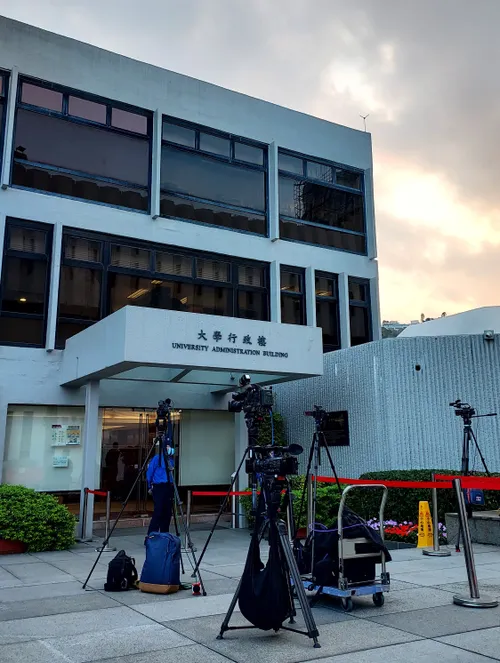Vidyasagar University Discloses Long-Withheld MoU with Yunan Minzu University of China After Nine Years: A Comprehensive Analysis
In a surprising turn of events, Vidyasagar University in India has revealed the details of a long-withheld Memorandum of Understanding (MoU) with Yunan Minzu University of China. This disclosure, coming after nearly a decade, has sparked considerable interest and speculation among academic and diplomatic circles. This essay delves into the background, implications, and potential future impact of this MoU, analyzing its significance for both universities and the broader context of India-China academic relations.
Table of Contents
Background and Historical Context
Vidyasagar University, established in 1981 in the Midnapore district of West Bengal, India, has been a notable institution for higher education, known for its focus on regional development and research. Yunan Minzu University, located in Kunming, China, is renowned for its emphasis on ethnic minority studies and multicultural education. The MoU between these two institutions, signed nine years ago, was intended to foster academic collaboration, research exchange, and cultural understanding between the two universities.
However, the details of this agreement were not made public until recently. The reasons for this prolonged secrecy remain unclear, but it is speculated that geopolitical tensions between India and China, along with administrative and bureaucratic hurdles, may have played a role.
The MoU: Objectives and Provisions
The disclosed MoU outlines several key objectives and provisions aimed at enhancing cooperation between Vidyasagar University and Yunan Minzu University. These include:
- Student and Faculty Exchange Programs: The MoU proposes a structured exchange program, allowing students and faculty from both universities to spend semesters or academic years at the partner institution. This is intended to promote cross-cultural learning and enhance academic collaboration.
- Joint Research Projects: The agreement emphasizes collaborative research in areas of mutual interest, particularly focusing on ethnic studies, regional development, and cultural heritage. This aims to leverage the unique strengths of both universities and foster innovative research outputs.
- Conferences and Workshops: The MoU encourages the organization of joint conferences, seminars, and workshops, providing a platform for scholars and researchers from both institutions to share their findings and insights.
- Language and Cultural Programs: Recognizing the importance of cultural understanding, the MoU includes provisions for language training programs and cultural exchange initiatives. This is expected to enhance linguistic skills and promote cultural awareness among students and faculty.
Significance of the Disclosure
The revelation of this MoU holds several significant implications:
- Academic Collaboration: The disclosure opens new avenues for academic collaboration between India and China. Given the geopolitical tensions between the two countries, academic partnerships can serve as a bridge to foster better understanding and cooperation.
- Enhanced Research Opportunities: The joint research initiatives proposed in the MoU can lead to significant advancements in fields such as ethnic studies and regional development. The combination of expertise from both universities can result in impactful research outcomes.
- Cultural Exchange and Understanding: The cultural exchange programs outlined in the MoU are crucial for promoting mutual understanding and respect between Indian and Chinese students and faculty. This can help in breaking down stereotypes and fostering a more inclusive academic environment.
- Soft Power and Diplomacy: Academic collaborations often serve as instruments of soft power. The MoU can enhance the diplomatic relations between India and China by showcasing a commitment to educational and cultural exchange.
Challenges and Concerns
While the disclosure of the MoU is a positive step, several challenges and concerns need to be addressed to ensure its successful implementation:
- Geopolitical Tensions: The ongoing geopolitical tensions between India and China could pose significant challenges to the smooth execution of the MoU. Any escalation in political conflicts might adversely affect academic collaboration.
- Bureaucratic Hurdles: The implementation of the MoU requires efficient administrative coordination between the two universities. Bureaucratic delays and red tape could hinder the timely execution of exchange programs and joint research projects.
- Funding and Resources: Adequate funding and resources are essential for the successful implementation of the MoU. Both universities need to ensure that sufficient financial and infrastructural support is available for the proposed initiatives.
- Language Barriers: Language differences can pose challenges in academic collaboration. While the MoU includes provisions for language training programs, effective communication between students and faculty remains a critical concern.
Future Prospects
Despite the challenges, the disclosed MoU holds immense potential for the future:
- Strengthening Academic Networks: The collaboration between Vidyasagar University and Yunan Minzu University can pave the way for broader academic networks involving other institutions in India and China. This can lead to the creation of a robust academic ecosystem fostering regional and international cooperation.
- Innovative Research Outcomes: The joint research initiatives proposed in the MoU can lead to innovative research outcomes with practical applications. This can contribute to regional development and address pressing social and economic issues.
- Cultural Diplomacy: The cultural exchange programs can enhance cultural diplomacy between India and China. By promoting mutual understanding and respect, these initiatives can contribute to building a more harmonious relationship between the two countries.
- Educational Excellence: The MoU can enhance the educational excellence of both universities by providing students and faculty with diverse learning experiences and exposure to different academic perspectives.
Conclusion
The disclosure of the MoU between Vidyasagar University and Yunan Minzu University marks a significant milestone in the realm of academic collaboration between India and China. While the prolonged secrecy surrounding the agreement raises questions, its revelation offers new opportunities for academic, research, and cultural exchange. Despite the challenges, the successful implementation of the MoU can lead to substantial benefits for both universities and contribute to the broader goal of fostering better understanding and cooperation between India and China. As the academic communities of both countries navigate the complexities of this collaboration, the MoU stands as a testament to the enduring power of education and cultural exchange in bridging divides and building a more interconnected world.










